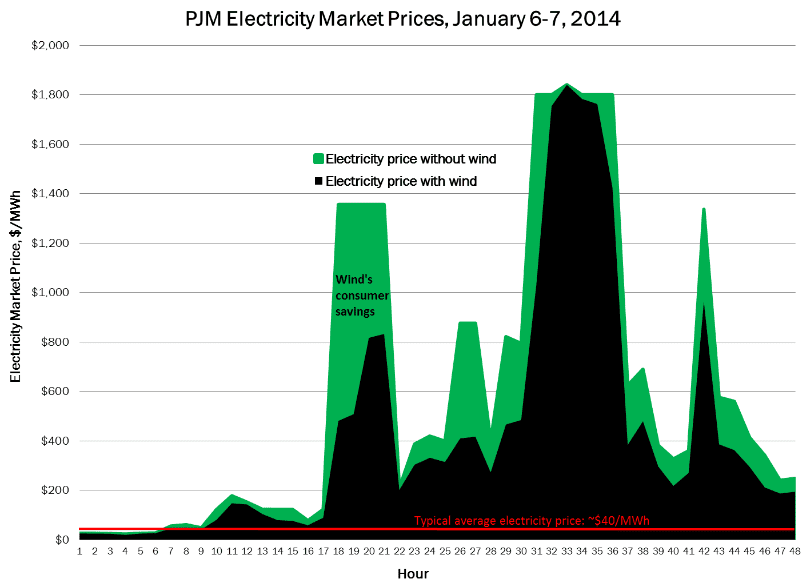Don’t worry: Cold weather can mean cold, hard savings
It’s a point we like to make often during these cold winter months: In 2014, wind energy saved consumers over $1 billion in just two days during the polar vortex weather event.
But how did that work?

Let’s take a quick look at this path to savings for of homeowners and businesses.
Electricity and natural gas prices spike
The first thing to understand is that demand for electricity and natural gas went through the roof during the polar vortex, as more people needed more energy to heat their homes. At the same time, the unusually frigid temperatures caused many conventional power plants to fail.
You can see where this is headed; rising demand and falling supply is not a friendly recipe for consumers’ wallets. Higher energy prices mean higher electricity bills, as well as more expensive heating bills for those who use natural gas to stay warm.
Sure enough, energy prices followed the same upward trend as demand for electricity and natural gas, rising to dozens of times their normal levels. This phenomenon was particularly pronounced in the Great Lakes and Mid-Atlantic regions.
Wind power to the rescue
Fortunately, wind farms continued to reliably produce electricity when demand was highest and other generation sources failed. This helped prevent power outages and softened conventional electricity price spikes.
To determine how much consumers saved during the worst of the polar vortex, January 6 and 7, 2014, AWEA calculated what energy prices would have been if no wind power had been online.
The results were dramatic: consumers saved over $1 billion on their electricity bills over two days, as demonstrated by the chart below.

Zero fuel costs key
Wind offers the ultimate price stability; its fuel costs are always zero because it doesn’t use any fuel. For conventional sources, increased demand increases prices, and ratepayers bear the burden. As we saw in 2014, wind power can help ease the pain.
For a more detailed analysis, see Wind energy saves consumers money during the polar vortex.




